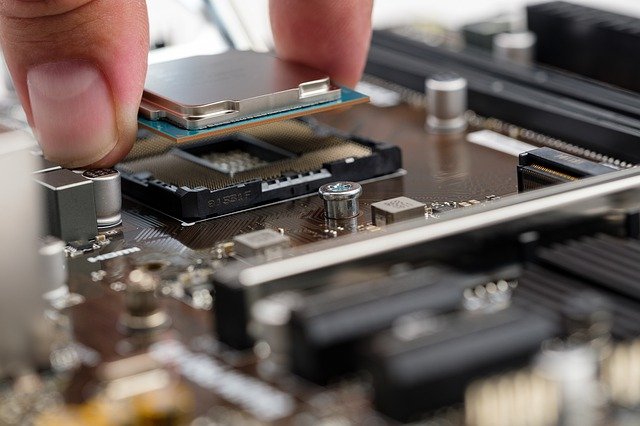AMD is in fashion, we cannot doubt that. And it is based on a program that , not without difficulties along the way, has endured the transition of period, has been updated, computing importance, brand-new processors and new features, too earmarking the sought-after ameliorates.
For these considerations and since all symbols have liberated their AM4 refresh motherboards, it is a great time to recommend the best simulations for three completely different scenarios that can be complementary: overclock, employment and gaming.
AM4 as a stage is perhaps at its best. Without brand-new chipsets other than those presented in the mid-range and B streak, with now ripen BIOSes, fewer compatibility problems and more advanced motherboards, it is the sweet moment.

But to recommend something we have to understand the why, the reasons to contact the final judgment with each model or poses. Therefore, we are going to emphasize the different fields and the needs and requirements, since they are different.
Formerly reserved for a handful of admirers, overclocking has become more democratic in recent years. The central motherboard creators, both AMD and Intel compatible, have understood this well. They now render countless posters that are likely to withstand some momentary overclocking.
The Best Amd Motherboards for Overclocking in 2021:
To help you choose from all of these overclockable motherboards, we have selected the top 5 currently available in our opinion.
ASRock AMD Ryzen 3000 Series Motherboard
About this item
- AMD Premium X570
- Supports AMD AM4 socket Ryzen 2000 and 3000 series processors
- AMD Ryzen series CPUs (Matisse) support DDR4 4666+(OC)/ 4400(OC)/ 4300(OC)/ 4266(OC)/ 4200(OC)/ 4133(OC)/ 3466(OC)/ 3200/ 2933/ 2667/ 2400/ 2133 ECC & non-ECC, un-buffered memory
- AMD Ryzen series CPUs (Pinnacle Ridge) support DDR4 3600+(OC)/ 3466(OC)/ 3200(OC)/ 2933/ 2667/ 2400/ 2133 ECC & non-ECC, un-buffered memory
- AMD Ryzen series CPUs (Picasso) support DDR4 3466+(OC)/ 3200(OC)/ 2933/ 2667/ 2400/ 2133 non-ECC, un-buffered memory
ASUS ROG X570 Motherboard
About this item
- AMD AM4 socket: ready for 2nd, and 3rd Gen AMD Ryzen processors and up to two M. 2 drives, USB 3. 2 Gen2, and AMD StoreMI to maximize connectivity and speed.
- Comprehensive thermal design: active PCH heatsink, M. 2 aluminum heatsink and ROG cooling zone.
- High-performance networking: on-board Wi-Fi 6 (802. 11Ax) with MU-MIMO support, 2. 5 Gaps Ethernet and Gigabit Ethernet, both with Asus LANGuard protection, and support for GameFirst V software.
- 5-Way Optimization: automated system-wide tuning, providing overclocking and cooling profiles that are tailor made for your rig.
- DIY friendly design: pre-mounted I/O shield, Asus SafeSlot, BIOS Flashback and premium components for maximum endurance.
ASUS Prime B350-Plus
About this item
- Powered by AMD Ryzen AM4, 7th generation Athlon and HD 2000 series processors to maximize connectivity and speed with NVMe M.2, USB 3.1, DDR4 and Gigabit LAN
- 5X Protection III Hardware-level safeguards provide component longevity and reliability
- Specially designed fan RGB header to support multi-color CPU fan LED strips
- Patent-pending SafeSlot Core fortified PCIe slot prevents damage caused by heavyweight GPUs
- FanXpert 2+ delivers advanced fan controls for optimized cooling. Supports CPU up to 8 cores.LAN:Realtek RTL8111H, 1 x Gigabit LAN Controller(s)
MSI Performance GAMING Motherboard
About this item
- Support AMD Ryzen 1st and 2nd Generation / Ryzen with Radeon Vega Graphics Processors for Socket AM4
- Supports 64gb dual channel ddr4 memory 1866/ 2133/ 2400/ 2667 MHz by jedec, and 2667/ 2800/ 2933/ 3000/ 3066/ 3200/ 3466 MHz by an XMP OC mode
- Supports 2 way AMD crossfire technology
- Mystic light and mystic light sync: 16.8 million colors / 17 effects in 1 click; synchronize RGB/rainbow strips and other RGB solutions for customization
- Ddr4 boost with steel armor: give your ddr4 memory a performance boost
GIGABYTE X470 AORUS Gaming Motherboard
About this item
- Supports AMD Ryzen 2nd Generation/ Ryzen with Radeon Vega Gaphics/ Ryzen 1st Generation
- Dual Channel ECC/ Non-ECC Unbuffered DDR4, 4 DIMMs
- 10+2 Phase IR Digital PWM Design
- Fins-Array Heatsink & Direct Touch Heatpipe
- 2-Way CrossFire/ SLI Graphics Support with Dual Armor and Ultra Durable Design
What do we have to look for in an AM4 motherboard for overclocking ?
Although we take for granted what overclocking is as a proficiency, it is true that there are different levels of it. An everyday used with a mid-range or high-end heatsink is not the same as the one with practice liquid cooler than the one looking to break records.
In any case, the most expensive and most complete options acquire the compromises of the users with less requirements by unadulterated reasoning.
To calculate what we should look for, firstly we have to take into account the number of total times destined for CPU and RAM memory, furthermore the number of coatings of the PCB as well as its construction and finally other details such as ended BIOS, characteristics exclusive to LN2, real-time voltage measurement options and cooling system, among many others.
If we talk about AM4 motherboards to work with, are they as special “where they’re” painted?
The problem with motherboards to work in AM4 is that it depends a lot on the sector where we are going to place the rig.
There are a series of committees that have more than interesting characteristics for certain fields, but as a rule, any motherboard with a chipset that suits our needs could be used for a common position automation job.
If instead we want to edit video, audio or carried out under intense work with the CPU or RAM by virtualization, or even networks, there we enter an orbit where AM4 as a platform was not designed for such performance, since that is what TR4 is for.
Things to know to choose the right motherboard
To help you make your choice after reading the top, we wanted to make certain details. Some choose their motherboard a bit hastily, but this choice is crucial.
As you probably know, motherboards are very important components in a computer. All the rest of the hardware is connected to it, and it is on them that the whole architecture of the PC is based.
Before even thinking about the overclocking capabilities of a motherboard, you have to carefully examine the possibilities and put them in line with your needs, your desires, and the hardware you already have available.
Two main types of motherboards
For this selection, we decided to make a top for AMD cards and a top for Intel cards. This choice is obviously not the result of chance. It was done for a simple reason: each motherboard is only compatible with one type of processor. To accommodate it, it has a dedicated outlet.
“AMD” cards thus have an AM4 socket, compatible only with AMD Ryzen processors. “Intel” motherboards have an LGA 1151 socket, compatible only with Intel processors.
If you already have a processor, then you won’t be able to choose just any motherboard. And before starting to develop your PC, it is therefore better to have a good idea of the considered processor, and therefore compatible motherboards.
Some size differences
Another important point to know before choosing your motherboard: the size.
The most common formats are, from largest to smallest, ATX, micro-ATX and mini-ITX. As you can imagine, ATX format cards generally offer much more interesting performance and possibilities than small formats … But if you already have a tower or if you run out of space, it is sometimes possible to choose a larger card.
small, even when you want to overclock a little! The Asus ROG Strix Z390-I Gaming, in particular, offers good overclocking performance in mini-ITX format.
Three brands that dominate the market
There are currently 3 main brands that dominate the motherboard market: MSI, Gigabyte and Asus.
Each of these brands offers different formats and different compatibilities.
Of course, the different models offered have certain advantages and disadvantages that we will discuss in the descriptions of the top products. Let us note all the same, presence of ASRock in our top, a brand which is more and more talked about.
What is overclocking?
Let’s also clarify what we are talking about when we talk about overclocking. The practice may become more democratic, it is still rather vague for some gamers …
First, note that overcloking may well be an increasingly widespread practice, and even now promoted by manufacturers, it will always present some risks.
Without taking the necessary precautions, you can damage your equipment! So be particularly vigilant before doing your experiments.
Small explanation
The term overclocking comes from the English words “clock”, which literally means “clock” but which can be translated here by “frequency, and” over “which means” beyond “. We could therefore translate this term by “overfrequencing”, in other words go beyond the original frequency.
To keep it simple, let’s say that most computer components have an operating frequency expressed in Hertz (Hz). Increasing the frequency of a component simply increases its performance.
You can’t overclock everything on a computer. Only the processor, RAM and graphics card are overclockable.
Last precision: for our selection of overclockable motherboards, we have taken into account the processor over-frequency capacities.
This is because the processor frequency is based on the base frequency of the motherboard bus. It is therefore the overclocking capabilities of the motherboard that make it possible to overfrequency the processor.
How to overclock?
There are several methods of overclocking its components, especially its processor. This can be done automatically or manually. Some motherboards, notably present in our top, include an automatic overclocking option to make life easier!






